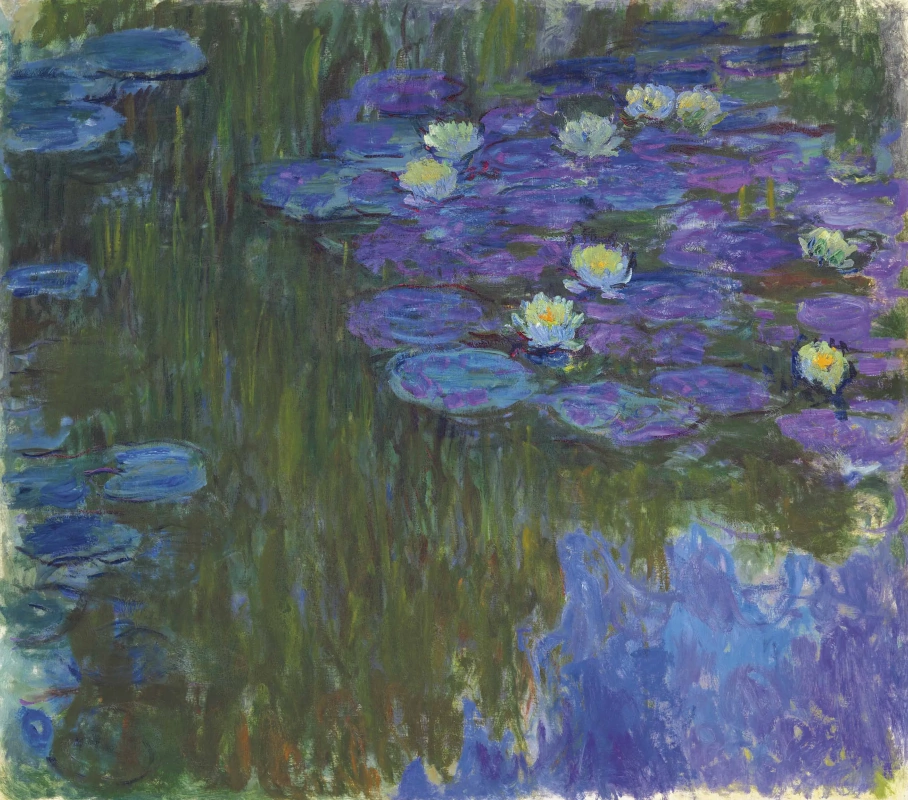Sotheby’s auction on May 14, 2019 set the new record not only for the work of Claude Monet himself, but also for any work of the Impressionists. His "Haystacks" was sold at for a huge amount of 110.7 million dollars with its on-request pre-sale estimate of $55 million.
The oil on canvas that still remains in private hands, titled "Meules" and completed in 1890, is the first piece of Impressionist art to command more than $100 million at auction, said Sotheby’s, which handled the sale.
Haystacks is a title of a series of impressionist paintings by Monet. The primary subjects of all of the paintings in the series are stacks of hay in the field after the harvest season. Twenty-five canvas series begun in the end of summer of 1890 and continued through the following spring, using that year’s harvest. Some use a broader definition of the title to refer to other paintings by Monet with this same theme. The series is known for its thematic use of repetition to show differences in perception of light across various times of day, seasons, and types of weather. The subjects were painted in fields near Monet’s home in Giverny, France.
Most works in the series have long been displayed in top world museums, from the Getty Center in Los Angeles to the Musée d’Orsay in Paris and the Metropolitan Museum of Art in New York.
Most works in the series have long been displayed in top world museums, from the Getty Center in Los Angeles to the Musée d’Orsay in Paris and the Metropolitan Museum of Art in New York.
According to Sotheby’s, "strong diagonal lines (one from the rightward-facing perspective, the other from slanted beams of sunlight) meet at the center of the work, grounding the layers of elaborate brushstrokes and guiding the viewer’s gaze across the canvas. The unique perspective, dynamic composition, and vibrant paint palette sets Meules apart, even in a series as celebrated as Haystacks."
Haystacks
1891
Monet completed the oil painting in 1890 as part of his Meules (Haystacks) series, depicting rural life near his home in the Normandy region. It was last auctioned in 1986, when it fetched just $2.5m. Until then it had been in the hands of one family — who bought the piece directly from the artist’s dealer — for nearly a century.
This sale, in addition to a record rate, marks a turning point in the history of the work of art itself — the price of the painting was 44 times higher than 33 years ago. Six bidders have been fighting for the masterpiece for eight minutes at the New York sale. Sotheby’s did not name the new owner. A Sotheby’s press release said the painting is now the ninth-most expensive work ever sold at auction.
This is one of only four of the works by the artist to go under the hammer this century.
Nymphéas en fleur
1917, 160.3×180 cm
Previously, the most expensive Monet painting was "Nymphéas en fleur"(c. 1917). In May 2018, a successful bidder laid out almost $ 84.7 million for it at Christie’s New York. This painting was part of the collection of David Rockefeller, the head of the Rockefeller House from 2004 to 2017, and his wife Peggy.

The story of the "Haystacks" has not been without famous magnates. The first owner of the masterpiece was Bertha Honoré Palmer, who bought it in 1892. Being the wife of a rich Chicago businessman Potter Palmer, she had the opportunity to invest in great works of art. Mrs. Palmer first saw the landscape at Monet’s large-scale exhibition in Paris in 1891 — and fell in love with the painting. A year later, she acquired the work from artist’s dealer Paul Durand-Ruel. In the same year she resold a masterpiece to the Paris museum, but by November she had changed her mind. Haystacks, along with eight other works from this series, returned with her to the United States.
Throughout her life, Mrs. Palmer remained an enthusiastic admirer of Monet’s series paintings; in addition to the Haystacks, she owned four of the Poplars, three of the Rouen Cathedral, and three works from the morning on the Seine series. After her death, the remarkable collection of 19th century became part of part of her son and daughter-in-law, Honoré & Grace Palmer’s, collection.
Left: Bertha Honoré Palmer. Sotheby’s
Left: Bertha Honoré Palmer. Sotheby’s

Claude Monet, Meules, 1890. Sold for $110.7 million, an artist record.
Sotheby’s.
Sotheby’s.
Monet settled in Giverny in 1883. Most of his paintings from 1883 until his death 40 years later were of scenes within 3 kilometres of his home. Indeed, the haystacks themselves were situated just outside the artist’s door. He was intensely aware of and fascinated by the visual nuances of the region’s landscape
and the variation in the seasons.
Title illustration: Claude Monet, Meules, 1890.
Based on materials from Sotheby’s official site, Artsy.net, BBC News.
Based on materials from Sotheby’s official site, Artsy.net, BBC News.
Художники, упоминаемые в статье






























